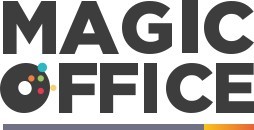Understanding the pmo program management office
What is a PMO and its importance in UK companies
A PMO, or Program Management Office, serves as a centralized unit within an organization that provides support, governance, and oversight for project management activities. It's a hub for standardizing processes, methodologies, and tools to enhance project efficiency and success rates.
In the UK, PMOs have grown significantly in importance, owing to their ability to streamline project management efforts and enhance strategic alignment. According to the Project Management Institute, more than 70% of organizations have a PMO, and those with a PMO report higher project success rates.
The role of a PMO in organizations
A PMO in an organization ensures that all projects align with the company’s strategic goals and business objectives. It helps to manage resources effectively, especially in complex projects with cross-functional teams. A centralized PMO can lead to a 30% improvement in project success rates, as noted by a 2022 PM Solutions report.
Beyond just managing projects, a PMO also focuses on continuous improvement. They analyze past projects to identify best practices and avoidable pitfalls. This leads to more predictable outcomes and increased efficiency.
Why UK firms are investing in PMOs
Many UK firms see the value in investing in PMOs because they offer repeatable processes, templates, and a repository of lessons learned. This systematic approach aids in reducing project costs and improving time management. For instance, Microsoft Project and Oracle Primavera are popular PMO tools that support optimizing project success by offering comprehensive solutions for resource management, scheduling, and budgeting.
Additionally, PMOs play a crucial role in regulatory compliance, particularly in industries like finance and healthcare. By maintaining stringent oversight, they help ensure that projects are completed within regulatory frameworks.
Measuring the impact of a PMO
To understand whether a PMO is effective, organizations often measure key performance indicators (KPIs). These can include metrics like project delivery times, budget adherence, and stakeholder satisfaction. According to a report by the Project Management Institute, organizations with a well-established PMO see a 40% improvement in these KPIs. This translates to better financial outcomes and stronger stakeholder confidence.
Key roles and responsibilities within a pmo
Key roles and responsibilities within a pmo
Establishing a Program Management Office (PMO) within your organization is a strategic move to align your project activities with business goals. At its core, a PMO acts as a centralized hub for project, program, and portfolio management, ensuring that projects are completed on time and within budget. Let's dive into the different roles and responsibilities that contribute to its success.
The pmo manager
The PMO manager is the lead coordinator and a crucial figure in any PMO. According to a 2022 report by the Project Management Institute, over 70% of organizations have a designated PMO manager. Responsibilities include overseeing the PMO's daily operations, managing resources, and ensuring alignment with the company's strategic goals. For example, a PMO manager at Microsoft might coordinate between software development teams and senior management to streamline project execution.
Project managers
Project managers handle the nitty-gritty of individual projects. They ensure each project stays on track, mitigating risks and managing resources accordingly. A 2021 study by Oracle revealed that effective project management could enhance project success rates by up to 80%. They often utilize PMO software, such as Microsoft Project, to keep teams aligned and track progress.
Resource management team
The resource management team ensures that projects have the necessary resources – be it personnel, technology, or additional support. They play a fundamental role in balancing workloads and preventing bottlenecks. A well-staffed PMO ensures resources are allocated efficiently, thereby supporting the timely delivery of projects and programs.
Strategic planning and portfolio management
Portfolio managers within the PMO focus on the bigger picture, ensuring projects align with the company's overall strategy. They balance the project portfolio to meet business objectives, manage risks, and optimize resources. Research by the Project Management Institute highlights that companies with robust portfolio management practices are 20% more likely to meet their strategic goals.
Support roles
Finally, support roles such as business analysts, financial experts, and administrative staff within a PMO provide the backbone that enables project success. They handle the financial aspects, conduct analysis to inform decision-making, and manage documentation to ensure smooth workflows. For more details on optimizing efficiency within your PMO, you can read more here.
Best practices for establishing a pmo in UK companies
Establishing pmo structure and governance
First things first, defining the structure of a program management office (PMO) in UK companies is essential. According to the Project Management Institute, a well-defined PMO structure enhances project success rates by 38%. Typically, a PMO structure includes key roles such as PMO manager, project managers, and support staff. Clear guidelines and responsibilities are pivotal in this setup.
Strategic alignment with business goals
Ensuring that your PMO aligns with your organization’s strategic goals is non-negotiable. A 2020 study by PwC found that companies with PMOs that are strategically aligned report 27% higher project success rates. For instance, PMOs should work closely with executives to prioritize projects that directly support the organization’s objectives, all while managing resources efficiently.
Consistent use of pmo management tools
Leveraging PMO project management software can make a world of difference. According to a Gartner report, 68% of high-performing PMOs use dedicated project management software tools, such as Oracle Primavera or Microsoft Project. These tools help in task allocation, time tracking, and overall project portfolio management.
Fostering a culture of continuous improvement
For a PMO to thrive, fostering a culture of continuous improvement is vital. Regularly reviewing and improving your project management processes helps in keeping alignment with evolving business goals. A PM Solutions survey showed that organizations practicing continuous improvement in PMOs saw a 33% reduction in project failure rates.
Training and certifying pmo staff
An investment in training and certification for PMO staff, such as PMP certifications from the Project Management Institute, can yield significant dividends. According to a 2019 PMI report, organizations with mature PMO programs typically have over 60% of their project managers certified, leading to smoother project executions and reduced delays.
Establish a feedback loop
Creating a reliable feedback loop between the PMO and project teams ensures that challenges are addressed promptly. This can be as simple as regular status updates and feedback sessions. According to a study by McKinsey, effective communication in PMOs can improve project completion times by as much as 20%.
It's crucial to follow best financial management practices to streamline the overall efficiency of your PMO. For more on the roles and responsibilities within a PMO, check out our detailed guide.
The impact of pmo software on project management
Revolutionizing project management with pmo software
The role of PMO software in transforming project management cannot be understated. With its blend of task management, resource allocation, and progress tracking, this technology is a game changer for any PMO program management office. So, what are the defining impacts?
Enhanced efficiency and time management
PMO software tools, such as Microsoft Project and Oracle Primavera, have been proven to increase efficiency in managing several projects simultaneously. A study by the Project Management Institute (PMI) showed a 28% reduction in project delays when PMO software was utilized. These tools automate routine tasks, freeing up project managers to focus on strategy and problem-solving.
Better resource allocation
Resource management is another area where PMO software makes an impact. PMO solutions offer visibility into resource availability, leading to better assignment and optimization. For example, a report by Gartner indicated that companies using PMO software saw a 25% improvement in resource utilization.
Real-time project tracking and reporting
Real-time data is critical for informed decision-making. PMO software provides up-to-the-minute updates on project status, budget, and timelines. This transparency ensures that project goals are met on time and within budget. According to a survey, 90% of organizations with PMO software reported improved project visibility and accountability.
Integrated project management methodologies
PMO software supports various project management methodologies like Agile, Waterfall, and Scrum. This flexibility allows teams to tailor their project approach depending on the project requirements and strategic goals of the organization. A report from McKinsey highlighted that 77% of companies experienced better project outcomes when they adopted flexible PMO software.
Data-driven decision making
Analytics and data insights play a critical role in the modern PMO. PMO software provides dashboards and reporting tools that help project managers and stakeholders evaluate project health. Using data helps in identifying bottlenecks and implementing corrective measures in real-time. According to PMI, 85% of organizations see PMO software as integral to their project performance analytics.
Reducing project risks
Risk management is streamlined with PMO software. Automated alerts and risk assessment features ensure that potential issues are flagged early. A research by Aberdeen Group found that businesses using PMO tools saw a 30% reduction in project risks.
Clearly, the adoption of PMO software can revolutionize how projects are managed in UK companies. It's not just about keeping projects on track but transforming the entire project lifecycle for better outcomes.
Case studies of successful pmo implementations
Real-world examples of successful pmo implementations
How microsoft's enterprise pmo improved project management
Microsoft's enterprise Program Management Office (PMO) serves as a stellar case study showcasing the profound impact a well-implemented PMO can have on an organization. The tech giant leveraged its PMO to overhaul its project management processes, significantly increasing efficiency and compliance across various departments. By utilizing tools like Microsoft Project and Power BI, the company was able to streamline project tracking and reporting, resulting in a 20% reduction in project overruns and delays.1Oracle's integration of pmo to meet strategic goals
Another exemplar is Oracle, which incorporated a PMO to align its projects and programs with strategic business goals. Oracle’s PMO managed to prioritize projects effectively and allocate resources more precisely, which helped in meeting time and budget requirements consistently. A focused approach on quality assurance and risk management further facilitated the completion of 95% of their projects within the stipulated timelines.2Case study: efficient resource management at united utilities
United Utilities, a leading UK water company, successfully implemented a PMO to address challenges in resource management and ensure that their strategic goals were met. With the guidance of their PMO, United Utilities optimized its resource allocation processes, effectively balancing workloads across various teams. This approach led to a 15% increase in project delivery efficiency, reflecting the importance of a well-structured PMO in utility management.3Project management office at tesco: budget and time management
Tesco is another significant example of how a PMO can help maintain stringent control over time and budget parameters. A dedicated PMO office allowed Tesco to centralize its project management efforts, ensuring uniformity in processes and standards across different projects. This consolidation resulted in a remarkable 18% reduction in project costs and enhanced collaboration among team members.4Nhs: balancing complex projects and programs
The NHS implemented a PMO to manage an array of complex projects and programs effectively. Balancing these multifaceted projects required stringent oversight and resource allocation, roles the PMO aptly fulfilled. As a result, the NHS saw an improvement in project success rates by 30%, highlighting the critical role of PMOs in public healthcare administration.5Multi-industry case studies and expert insights
Various PMO implementations across multiple industries illustrate the adaptability and effectiveness of this management office. Experts, including the Project Management Institute (PMI), emphasize the importance of PMOs in achieving strategic alignment and operational efficiency. According to PMI, organizations with mature PMOs see a 38% higher success rate in project delivery.6 1 2 3 4 5 6Trends in pmo and project management methodologies
Emerging methodologies in pmo program management
With the shift towards agility, the application of Agile methodologies within PMOs is on the rise. A survey by the Project Management Institute found that 71% of organizations reported using Agile approaches for their projects. While Agile was once the domain of IT, it's now spreading across different sectors, given its benefits in flexibility and responsiveness to change.Hybrid methodologies
Hybrid methodologies, blending Agile and traditional Waterfall approaches, are being increasingly adopted. According to a report by PwC, over 20% of project management offices are utilizing hybrid methodologies to leverage the strengths of both frameworks. This blend allows for structure where required, while also offering the adaptability needed in the fast-paced project environments.Digital transformation and automation
Digital tools and automation are revolutionizing PMOs. Tools like Microsoft Project and Oracle Primavera are common, automating routine tasks and improving the accuracy of project tracking. A report by McKinsey highlighted that implementation of digital tools can save up to 30% of project management costs. By using tools like PMO software, organizations can streamline their management processes and improve efficiency.Data-driven decision making
Data analytics and business intelligence are becoming integral parts of PMOs. A Gartner study showed that 60% of PMOs embrace data-driven decision-making to enhance project performance. This trend helps project managers identify patterns, forecast outcomes, and make informed decisions, ensuring that projects align with organizational strategic goals.Remote and distributed workforces
The rise of remote work has significant implications for PMOs. Remote PMOs necessitate robust communication tools and practices to manage distributed teams effectively. A survey by FlexJobs found that 58% of respondents reported improved team productivity when working remotely. This shift requires PMOs to adopt new strategies to maintain oversight and support project teams.Focus on strategic alignment
Aligning projects with the broader business goals is becoming a central priority for PMOs. According to a study by PMI, organizations that align their PMOs with corporate strategy report a 27% higher success rate in project outcomes. This alignment ensures that resources are directed towards projects that contribute directly to the organization's strategic objectives.Expert insights on the future of pmo in the UK
Emerging pmo trends shaping the future
The future of PMO program management offices (PMOs) in UK companies is set to evolve, driven by the need to align with strategic goals, technological advancements, and agile methodologies.
Shift towards agile and hybrid methodologies
There's a steady shift from traditional project management methodologies to more agile and hybrid approaches. According to the Project Management Institute, 71% of organizations report that they use agile approaches for their projects. This shift allows companies to enhance flexibility, adaptability, and ultimately, project success rates.
Increased focus on strategic alignment
PMOs will continue focusing more on aligning project portfolios with strategic business objectives. A study by PwC revealed that aligned PMOs report a 20% higher project success rate. PMO leaders must ensure that all projects contribute directly to the organization’s strategic goals, enhancing organizational efficiency and resource management.
Embracing advanced pmo software
Another notable trend is the adoption of advanced PMO software. Tools from industry giants like Microsoft and Oracle are becoming indispensable. For example, Microsoft Project software provides robust features for planning, resource allocation, and schedule management, helping project managers keep track of time and budget requirements more effectively.
Data-driven decision-making
With the growing emphasis on data analytics, PMOs will increasingly utilize data-driven insights to drive decision-making and project optimization. A Gartner report indicates that by 2023, over 75% of PMOs will rely on analytics to track project performance and outcomes.
The rise of remote and distributed teams
As remote and distributed workforces become the norm, PMOs must adapt to managing projects across various locations. This trend requires robust communication tools and project management software that supports collaboration, such as Microsoft Teams and Slack.
Enhancing pmo capabilities through continuous improvement
PMOs are also focusing on continuous improvement practices to enhance their capabilities. According to a PMI survey, organizations that implement continuous improvement frameworks see a 28% increase in project success rates. These practices include regular training for project managers, process evaluations, and incorporating feedback loops.
As the PMO landscape in the UK evolves, staying abreast of these trends and implementing them effectively can propel organizations towards greater efficiency, innovation, and strategic alignment.
Common challenges and solutions in pmo management
Obstacles in properly resourcing the pmo
Resource allocation is one of the most frequent hurdles encountered by PMOs. According to a report by the Project Management Institute, about 24% of organizations struggle with balancing available resources against project demands. Lori Brown, a project management expert, notes, "A common error is underestimating the resources required to support ongoing and new projects simultaneously." When teams are overextended, the quality of project outcomes can nosedive.
Resistance to change within the organization
Getting organizational buy-in is another significant challenge. PMOs often face resistance from employees and management alike who are reluctant to adapt to new processes and tools. In a 2022 survey by Microsoft, 35% of project managers cited resistance to change as a major barrier to successful PMO implementation. This inertia can stifle progress and lead to poor alignment with the company’s strategic goals.
Maintaining consistent and effective communication
Communication breakdown is a pervasive issue within many organizations. The 2021 State of Project Management Report revealed that ineffective communication was a problem for 29% of surveyed project managers. PMOs must act as the central hub for all project-related communication, ensuring that project goals, timelines, and updates are clearly articulated and understood by all stakeholders.
Managing time and budget constraints
Time budget can be significant constraints. About 32% of projects don't meet their deadlines or stay within their budgets, according to a report by Oracle. Kevin Smith, a seasoned project manager, states, "Balancing the time and budget is like walking a tightrope. Any misstep can lead to project delays and cost overruns." Accurate forecasting and continuous monitoring are essential to staying on track.
Software and tools adaptation
Selecting and implementing the right PMO software can be fraught with difficulties. The plethora of available tools can be overwhelming, and choosing the wrong one can result in inefficiencies and wasted resources. About 28% of organizations report having issues with integrating new PMO software, according to a study by Gartner.




-large-teaser.webp)








